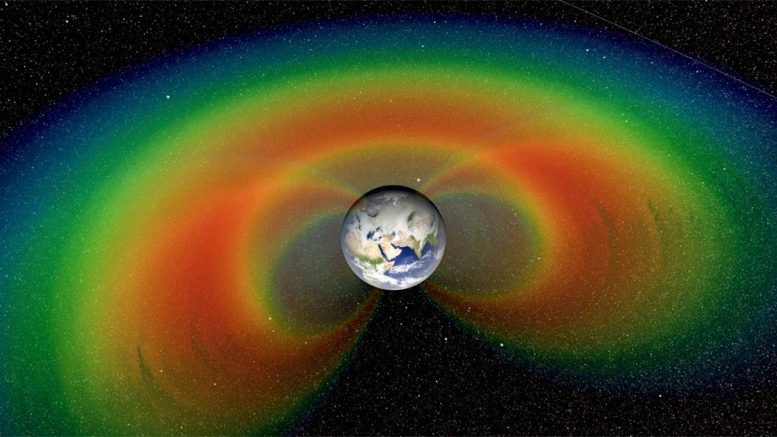
An artist’s depiction with cutaway section of the two giant donuts of radiation, called the Van Allen Belts, that surround Earth. Credit: NASA/Goddard Space Flight Center/Scientific Visualization Studio
Radiation Belts — Fun Facts
- Two radiation belts filled with electrons and charged particles surround Earth. The inner one is fairly stable, but the outer one swells and shrinks over time.
- The radiation belts look like two giant donuts. Earth sits at the center of the “donut hole.”
- When the inner belt swells, this region of dangerous radiation expands to include the orbits of the International Space Station and many other satellites.
- The first evidence for the radiation belts was reported in 1958 by James Van Allen using data from a cosmic ray detector on the very first NASA mission: Explorer 1 spacecraft. Explorer 1 launched into Earth’s orbit on a Jupiter C missile from Cape Canaveral, Florida, on January 31, 1958.
- The outer radiation belt was discovered a few months after the inner belt using data from Explorer IV and Pioneer 3, both launched in 1958.
- When the Radiation Belts were first discovered, the radiation was so intense that at first scientists thought they might be recording a Soviet nuclear test.
- The Van Allen Probes were placed into a highly elliptical orbit, also known as a “geostationary transfer orbit”.
- The Van Allen Probes’ orbit is known as a “geostationary transfer orbit” since it is the same orbit that is also used to boost spacecraft into geosynchronous orbit.
- Particles that fall out of the radiation belts can affect the chemistry and composition of Earth’s atmosphere.
- The material in the radiation belts is made of charged particles – a material called “plasma.” Plasma surrounds the sun and pervades much of the universe.
- Magnetic fields are invisible to the eye, but they provide a structure throughout space that guides how charged particles move.
- The Van Allen Radiation Belts are one part of Earth’s dynamic magnetic environment, known as the magnetosphere.
- During periods of intense space weather, the density and energy of radiation belt particles can increase and pose a danger to astronauts, spacecraft, and even technologies on the ground.
- Some particles in the radiation belts move at nearly the speed of light, which is about 186,000 miles (300,000 kilometers) per second.
- Our society relies on more than 800 satellites operating in the radiation belts for communication and navigation.
- The outer radiation belt is typically about 8,400 to 36,000 miles (13,500 to 58,000 kilometers) above Earth’s surface.
- The most intense area of radiation within the outer belt is between about 9,000-12,000 miles (14,500-19,300 kilometers) above Earth’s surface.
- The more we understand about what happens in the radiation belts, the better we can protect our satellites.
- Earth’s magnetic field shields us from solar storms and the constantly streaming solar wind.
- The largest, single hazard for astronauts traveling to Mars will be overcoming exposure to solar storms and radiation.
- One sensor on the Van Allen Probes spacecraft measured their lifetime radiation exposure giving engineers accurate information to build radiation tolerant spacecraft and instrumentation in the future.

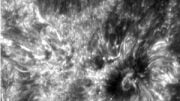
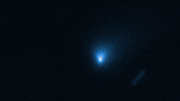




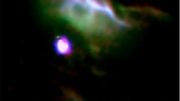
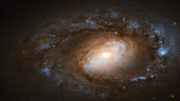
Be the first to comment on "Van Allen Radiation Belts: 21 Fun Facts"